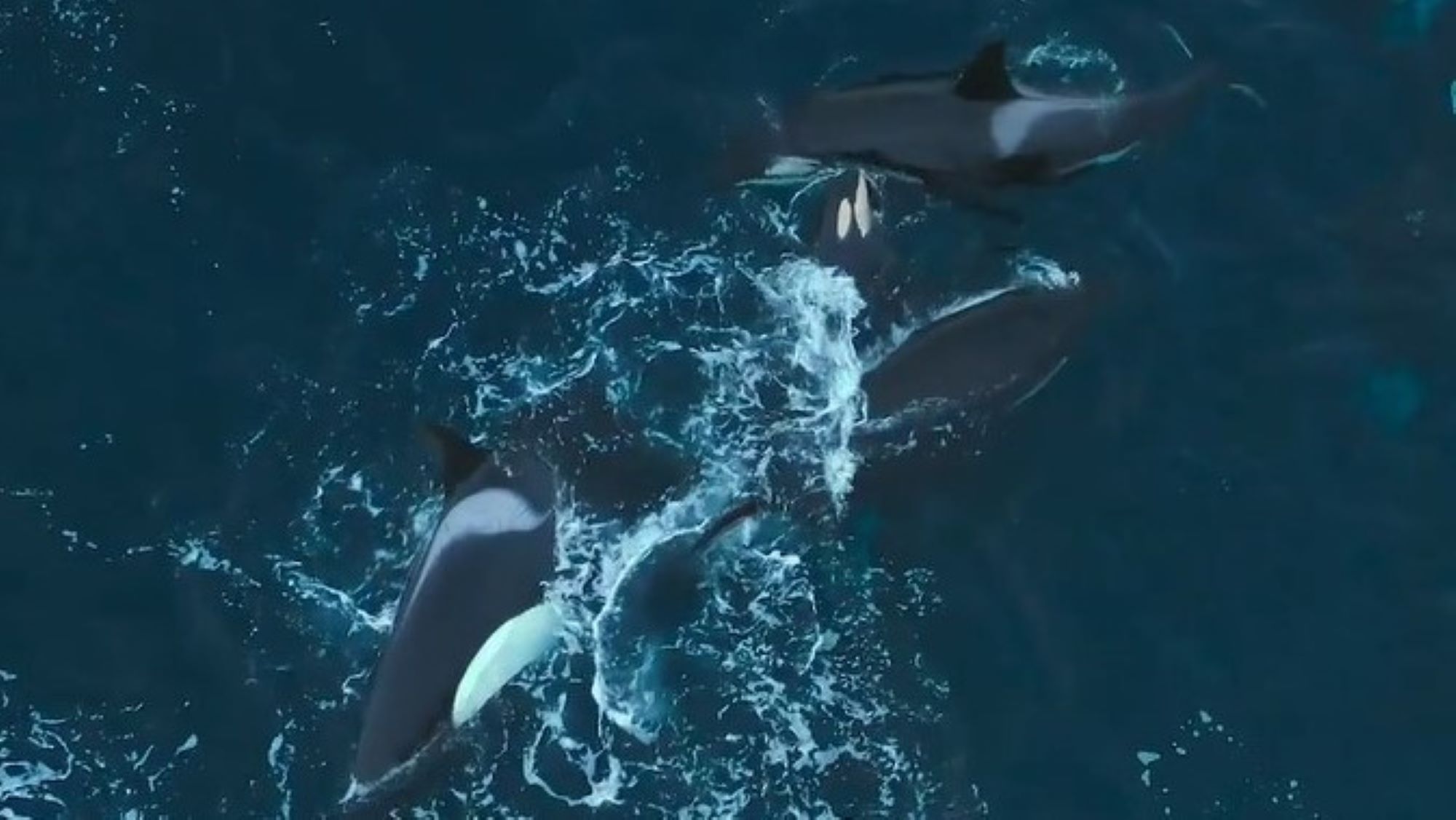
Heartbreaking footage shows an orca mom and her adult son drowning a young calf from a neighboring pod. The dramatic video is likely the first time this rare behavior has been filmed.
In the video, a female orca (Orcinus orca) and her daughters begin to play with the calf — a behavior that is not unusual when two pods come together. However, the play soon turns violent. The son hits the calf with force, then he and his mother trap the calf between them, forcing it underwater to drown it.
The brutal clip was filmed as part of National Geographic's new series "Queens," which looks at the behaviors of matriarchs in the animal kingdom.
Orca infanticide is extremely rare, and it wasn't something the production team was expecting to capture. "This behavior is so rare — in fact we think this is probably the first case of filmed orca infanticide," Chloe Sarosh, executive producer on the series, told Live Science. "We didn't plan to film it, it was just a case of right place, right time."

The team filmed the encounter over several hours, Sarosh said. A few days later, an orca that matched the size and description of the drowned calf washed up dead on a shore 5 miles (8 kilometers) away. It's assumed this was the same drowned calf.
Related: Orcas are learning terrifying new behaviors. Are they getting smarter?
Because the encounter was so unexpected, the team contacted several scientists to help interpret the behavior and confirm it was a case of infanticide. While the behavior of the matriarch and her son is clear, understanding the reactions of the other pod members and their roles will require further analysis. "That's why this footage is so important because it gives scientists a chance to study it to identify fins and markings of who and what role they're playing in this behavior," Sarosh said.

Infanticide among orcas is so rare it has only been documented once in published scientific literature, Charli Grimes, a researcher in animal behavior at the University of Exeter in the U.K., told Live Science in an email. "A lot of time is spent observing killer whales in the Pacific Northwest and given that it has only been documented once in the literature does appear to make it a rare event," she said.
The study, published in Scientific Reports in 2018, records a case of calf-killing among a population of transient killer whales in the North Pacific. Like the latest encounter, this involved an orca mother and her adult male son. Researchers captured footage of the aftermath of the 2018 event, but it doesn't show the moment the calf was killed.
Scientists believe infanticide among orcas may enable the male to breed with the mother of the deceased calf. "The assumption is that this was done so that the mother would come back into estrus [a period of sexual receptivity] and the male would be able to mate with her and have more calfs in another pod to the matriarch — furthering the genes, furthering the genetic life," Sarosh said.
"It's phenomenal behavior, really important behavior," she added. "It shows the power of the matriarch and the lengths that she'll go to, to do what is best for her pod and her son and her lineage."







